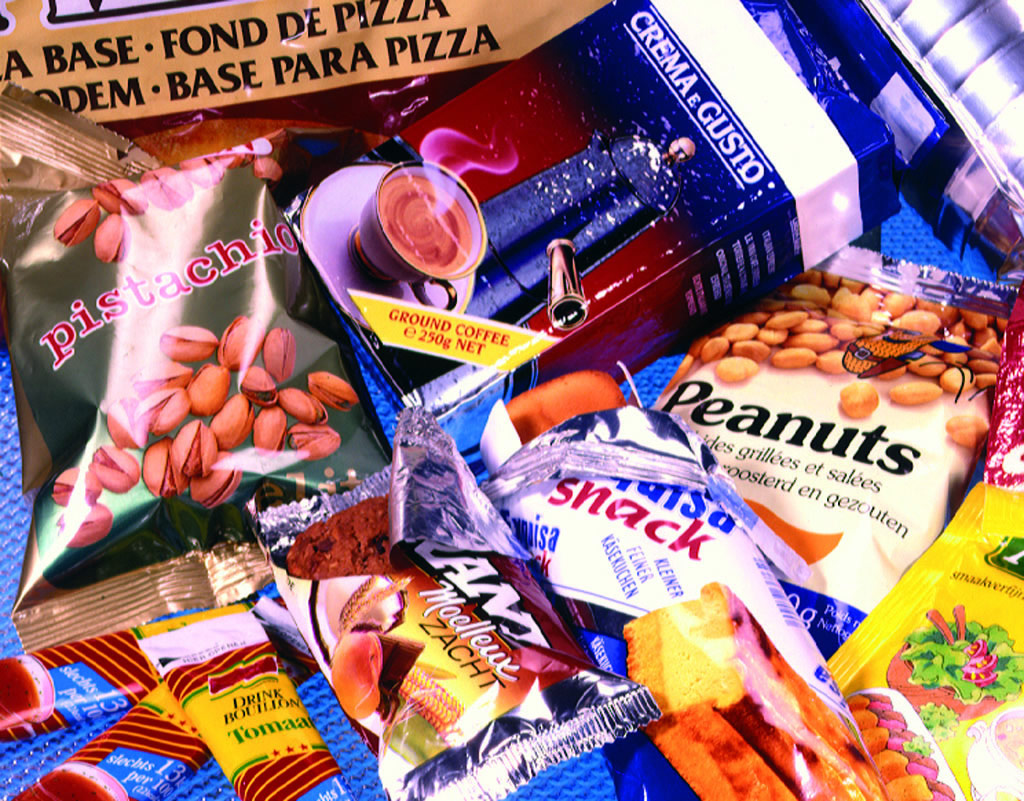43 how to read european food labels
How To Read European Nutrition Labels I completely forgot I had this assignment, such a life saver! 1. Take our Writers base 100%. Be sure that math assignments completed by our experts will be error-free and done according to your instructions specified How To Read European Nutrition Labels in the submitted order form. How To Read Food Expiration Dates And Lot Codes According to the Institute of Food Technologists, most U.S. food companies stamp lot codes and/or expiration dates on their products. There are two types of codes: Lot Code: When manufacturers ...
Reading Nutrition Labels - Cronometer This label type can be found on most American branded products. Key features include: Energy measured in Calories only, Convenient serving size measurement (e.g. cups, oz, fl. oz, Tbsp) Vitamin D, Iron, Calcium, Potassium %DV (based on 2000 kcal diet) Some of the Daily Values have changed.

How to read european food labels
How to Read Carbohydrates on Nutrition Labels|How to Read ... -Sugars -Dietary fibre The top carbohydrates row is the total amount of carbs present. Made up of all the sugars, dietary fibre and starch, which is the remaining amount after the sugar and fibre. So in the above muesli label we have 51.8g of carbs per 100g. 12.7g is sugar 7.9g is fibre Which means that 31.2g is starch (51.8 - 12.7 - 7.9) Know your labels - Compassion in World Farming We are campaigning for clear food labelling that shows method of production - in which sort of system the animal was farmed.. Food labelling should and can be simple but is often made to be quite confusing. Across food products there are so many different codes, labels and standards that it can be difficult to know what the label means for animal welfare. Understanding European Food Labels - The Half-Empty Salt ... If you are limiting your sodium and are reading a package with EU labelling, simply take the amount of "Salt," (listed in grams) divide by 2.5, and then multiply by 1000 to find milligrams.
How to read european food labels. Food labels - NHS Colour-coded nutritional information tells you at a glance if the food has high, medium or low amounts of fat, saturated fat, sugars and salt: red means high amber means medium green means low In short, the more green on the label, the healthier the choice. How to read Nutrition Labels. My 4-step process to ... But we never make the effort to calculate our serving size and this information remains hidden in plain sight. 2. Cal, kCal and kJ First up, in the nutrition label world 1 kcal = kilocalorie = 1 calorie. 1 kilo calorie isn't = 1000 calories! Packaging and labelling | Food Standards Agency Food labels must be marked with either a 'best before' or 'use by' date so that it is clear how long foods can be kept and how to store them. Further information can be found in the guide on date... Differences between EU and US nutrition labels go far ... While it's common practice for labels in the EU to identify food additives by their E Numbers, in the US, additives must be referenced by their common names. "'Sodium caseinate' would be declared...
How to Read Food Labels | Mark's Daily Apple Some food labels and claims are more informative than others. When shopping, scan the shelves for certification icons and highlighted claims first. Before deciding yes or no, however, flip the product over, read the ingredient list, and check the nutrition facts to confirm they work for you. Nutrition labelling - Food Safety It must provide the energy value and the amounts of fat, saturates, carbohydrate, sugars, protein and salt of the food. The declaration must be presented in a legible tabular format on the packaging. Where space does not permit it, the information may be presented in linear format. Food Labeling Pro's and Con's | Understanding Today's ... Food labeling is currently a big topic in the agriculture and food industry. Many people have conflicting opinions about it. I think that there are definitely some pro's and con's to enhanced food labeling. Some of the pro's include more transparency to the consumer regarding what is in what they are buying. How to Read a Supplement Label - Council for Responsible ... Dietary supplement labels contain valuable information about supplement products. It is important to always read the label and follow the directions. See CRN's "Label Wise" microsite for an interactive "How to Read" guide and to learn more about the Supplement Facts label.
How you can Read Codes on Canned Foods - Proper Nutrition ... In chapter 10, we explain how to read pet food labels using a Whiskas dry cat food as an example. from Feed Your Pet Right: The Authoritative Guide to Feeding Your Dog and Cat by Marion Nestle, Malden Nesheim Atria Books, 2010: A bar-code reader may also be provided, typically to read stock codes. from Data Processing and Information Technology Food labelling: country of origin - GOV.UK Enforcement for Brexit label changes. See food labelling: giving food information to consumers for guidance on the enforcement approach in GB and NI for Brexit label changes. How to Read Food Labels Without Being Tricked A good rule of thumb is to scan the first three ingredients, as they make up the largest part of what you're eating. If the first ingredients include refined grains, a type of sugar, or... How to Read Carbohydrates on Food Labels - GlycoLeap When learning how to read carbohydrates on food labels, always remember that 1 serving of carbohydrate is equal to 15 g of carbohydrates. If you want to have a snack, it is recommended to eat no more than 1 to 2 servings of carbohydrates in one sitting. That would be around 15 to 30 g of carbohydrates. Snack = 15 - 30 g of carbohydrate
How to read food labels | Health Advice Hub | Thrive from ... Sometimes, food labels only give the figure for sodium, and the figure is in mg instead of g. High is more than 1.5g salt per 100g and will be colour-coded red. Moderate is 0.3g-1.5g per 100g and will be colour-coded amber. Low is 0.3g salt or less per 100g and will be colour-coded green. Tip: Particular foods to look out for.

Understanding French Wine Labels and Terms | Wine Folly | French wine labels, French wine, Wine ...
Nutrition labelling Q&A - EUFIC Food labels help us understand what's in packaged foods. By law, the label must include the energy content in kilocalories (kcal) and kilojoules (kJ), fats, saturated fats, carbohydrates , sugar, protein, and salt per 100 gram (g) or millilitre (ml). 2 This information must be shown together, and is most likely found on the back of the pack.
Labelling and nutrition - Food Safety Food law establishes the rights of consumers to safe food and to accurate and honest information. In the European Union, the labelling rules enable the citizens to get comprehensive information about the content and composition of food products. Labelling helps consumers to make an informed choice while purchasing their foodstuffs.
EU Nutrition Facts Templates - Ingredients List Label ... European Union regulations require that you declare energy, protein, fat, saturated fat, carbohydrates, sugars, and salt. Voluntary nutrients may be shown if they are present in significant amounts. The regulations allow several variations in the labeling format.
Calories: Reading Labels And Converting Eu & Us. Help ... Had calories in food been measured with normal calories (not "food" calories), the U.S. food labels would be 1000x higher than the EU counterparts. Considering the numbers remain roughly the same between EU and US foods, I imagine US companies figured people travelling abroad would pick up the difference in nomenclature quickly.
How to understand Nutrition food labels (EU/UK) — Gemma ... Here enters the need for nutrition labels, and some code to decipher what they mean: Energy. Energy free - less than 4kcal (17kJ) per 100ml. Reduced energy - at least a 30% reduction from the original product/compared product. Low energy - less than 40kcal (170kJ) per 100g for solids OR <20kcal (80kJ) per 100ml for liquids.
PDF 'Best before' date labels - European Parliament According to EU rules, food labelling must meet specific requirements. It must be in language that is easy for consumers to understand, and, if required, in several languages. EU legislation requires that food products bear an indication of either the date of minimum durability ('b est before' date) or of the 'use by' date.
How to Read a Food Label: A Healthy Skeptic's Guide to the ... How to Read a Food Label: A Healthy Skeptic's Guide to the Buzzwords From 'organic' to 'regenerative,' certain terms can have a halo effect so bright it's blinding.





:no_upscale()/cdn.vox-cdn.com/uploads/chorus_asset/file/4024354/talde-chicken-wings.0.jpeg)
Post a Comment for "43 how to read european food labels"